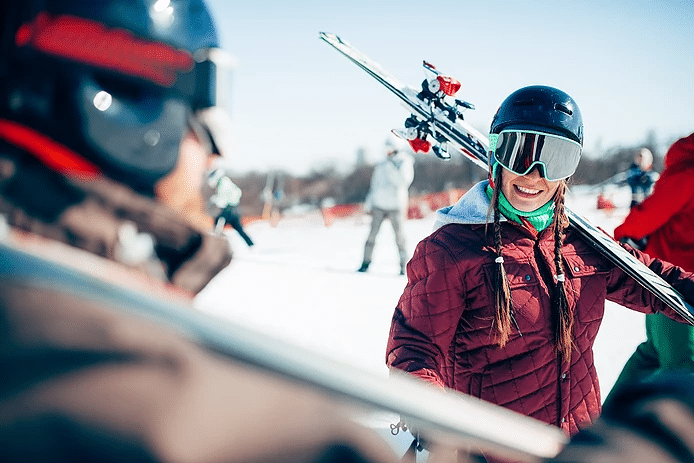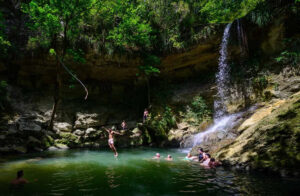Winter landscapes are stunning, but the combination of sun on snow can pose serious risks to your eyes. One of the most overlooked dangers in snowy environments is snow blindness, a temporary yet painful condition that can disrupt your outdoor experience. Whether you’re skiing in the Alps or hiking in the Rockies, understanding how to protect your eyes is crucial for every traveler.
What Is Snow Blindness?
Snow blindness (technically known as photokeratitis) is like a sunburn—except it affects your cornea instead of your skin. It’s caused by the intense glare of the sun reflected off snow, which amplifies ultraviolet (UV) radiation exposure to the eyes.
Despite the misleading name, snow blindness doesn’t mean total blindness. However, it can lead to temporary vision loss and severe discomfort. Many travelers report feeling like they’ve had sand in their eyes, often accompanied by extreme sun sensitivity, headaches, and blurry vision.
Common Snow Blindness Symptoms
Watch out for the following snow blindness symptoms if you’re spending time in snowy areas:
- Pain or burning in the eyes
- Redness and tearing
- Swollen eyelids
- Blurred vision or “snow eyes”
- Light sensitivity
- Feeling like something is stuck in your eye
- Temporary vision loss in extreme cases
If you experience these symptoms, you’re likely suffering from snowblindness, and immediate action is necessary.
Why Eye Color Matters in Snow Conditions
Interestingly, your eye color plays a role in how sensitive you are to UV rays. People with blue eyes or light brown hazel eyes often have less melanin, which provides natural protection against sunlight. That’s why blue eyes and snow are not always a great match.
In contrast, brown eyes and dark brown eyes in the sunlight are better at filtering UV rays. However, even if you have hazel eyes in sun or green eyes in sunlight, you’re still not immune. Everyone should wear protective eyewear.
What Does Snow Blindness Look Like?
People often ask, “What does snow blindness look like?” While it’s not visible to others, sufferers usually see bright flashes, halos, or a sensation of looking through frosted glass. In some cases, you may feel like you’re losing your vision entirely—this is especially common with bright light blue eyes or blind blue eyes in the snow.
Is Snow Blindness Permanent?
Good news: snow blindness is not permanent. Most cases resolve within 24–48 hours with rest and care. However, repeated exposure can cause long-term damage and increase the risk of cataracts. It’s not worth the risk when snow blindness sunglasses or goggles can offer full protection.
When and Where Are You Most at Risk?
Snow blindness can strike anywhere with strong UV reflection, including:
- Snow-covered mountains
- High-altitude treks
- Polar regions
- Even snow in the dark, when UV rays are still present
Interestingly, other environments like deserts can also cause sand blindness, where UV rays reflect off sand instead of snow.
Some people even suffer while walking city streets on sunny winter days—UV rays don’t discriminate!
Can Animals Get Snow Blindness?
Yes—dogs can get snow blindness too. Their eyes are also susceptible to UV damage in high-glare environments. If you’re traveling with pets, consider getting UV-protective goggles for them as well.
Preventing Snow Blindness: Essential Travel Tips
Travelers can take a few simple steps to protect their vision during snowy excursions:
1. Always Wear UV-Protective Eyewear
Use snow blindness sunglasses or snow goggles with 100% UVA/UVB protection. If you wear glasses, opt for prescription goggles or clip-on UV shields.
2. Avoid Looking Directly at Snow for Long Periods
Especially when the sun is on snow, the glare can be overwhelming. Take visual breaks and look toward shaded areas or the horizon.
3. Use Hats and Visors
A wide-brimmed hat or visor helps block UV rays from reaching your eyes at odd angles.
4. Stay in the Shade When Possible
Even partial shade from trees or buildings can minimize exposure.
5. Don’t Ignore the Clouds
UV rays can still cause damage on cloudy days. Many cases of snow blindness occur during overcast conditions because travelers are less cautious.
What to Do If You Get Snow Blindness While Traveling
If you suspect snow blindess, take the following steps:
- Remove contact lenses (if you’re wearing any)
- Rest your eyes by closing them or staying in a dark room
- Apply a cold compress to reduce swelling
- Avoid rubbing your eyes
- Use artificial tears to soothe irritation
- Seek medical attention if symptoms persist beyond 48 hours
How Long Does Snow Blindness Last?
Most cases last from 24 to 48 hours, depending on severity. However, some travelers with extreme sun sensitivity or snow glare issues may experience symptoms longer.
Travel Smart, See Clearly
Whether you’re heading to the alpine slopes, Arctic tundra, or snowy trails in Canada, your eyes deserve as much protection as your skin. Don’t let the beauty of the snow sun blind you to the risks.
By following these preventive measures and understanding the importance of eye color, sunlight, and UV exposure, you can enjoy your snowy adventure without putting your vision at risk.
Informed travel is smart travel—and that’s the message we believe in at The Inspiring Insight.




